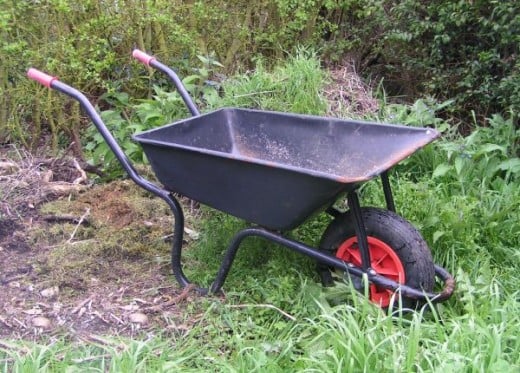Fast and Easy Science Fair Projects: We are #2




Second- and third-class levers
Purpose: Learn to use a second class lever (a simple machine) to reduce the force required to lift a heavy object.
Overview: A lever is mage up of a long shaft or board that rests on a support called a fulcrum. The objec you are trying to move is called the load With a lever, either force is gained and distance is lost or distance is gained and force is lost.
A seesaw is a lever. Some seesaws allow the fulcrum to be moved from the middle balancing point. If you sit on a seesaw and the fulcrum is closer to the other end of the board, a person sitting on that end will be easier for you to lift than if the seesaw had the fulcrum in the middle. This is an example of a first class lever (see here). A first-class lever is useful for lifting heavyy objexts a short distance.
There are three classes of levers, first class, second class, and the third class. A third-class lever is the opposite of a first-class lever. In a third-class lever, the fulcrum is close to where the force is applied. Sweeping with a broom is an example of the third-class lever. Your one arm applies a force, moving a small distance. Your othrt arm is the fulcrum, the point that the lever swings around. The other end of the lever has less force, but makes a big gain in the distance it moves. When youc ast a fishing line into the water you are using the concept of a thirs-class lever. Your one arm is the fulcrum and the other arm applies a lot of force over a short distance. The end of the pole has less force but moves quickly over a longer distance to throw the line out into the water.
In a second-class lever, the fulcrum is actually the point on which the lever rests, and instead of pushing down with force, you lift up (applying an upward force). Like a first-class lever, this too is useful for lifting heavy objects to a short height.
Hypothesis: It is easier to lift a heavy object by using a second class lever, and the closer the load is to the fulcrum, the easier lifting becomes.
You need:
- Wheelbarrow
- 2 plastic, one gallon jug bottles
- rope
- water
Procedure: First, fill three plastic one-gallon jugs with water.
Water weights a little more than 8 pounds per gallon. Try gently lifting all three jugs. Careful! They're heavy!
Now, place the three jugs (one at a time) in a wheelbarrow at the end near the wheelbarrow's handles. Lay the, in a row and use a piece of rope to tie them together and to the handles of the wheelbarrow. This will keep them from sliding when you lift the wheelbarrow up.
Lift the wheelbarrow by its handles. You will find that the jugs of water (including one of the weight of the wheelbarrow) is easier to lift then just trying to lift the jugs by themselves.
To make them even easier to lift, untie the jugs and move them to the front of the wheelbarrow by its handles. We lost distance (the just didn't raise quite as high), but we gained force. The jugs are even easier to lift when they're closer to the fulcrum.
Results and Conclusion: Write down the results of your experiment. Come to a conclusion as to whether or not your hypothesis was correct.
Something more: Use a second class lever to pull up on an object, rather than push up. Using a long board, place one end on the ground. Tie a piece of rope to the middle and tie the other end of the load. Lift up on the other end of the board.
Related Pages:
- Room for Brightness
Reflected Light Purpose: Show that a room is better lit when the room's walls are painted in bright colors compared to a room where the walls are dark (makes a room safer, (reduces eye fatigue when... - Watt?
Comparing light output and power consumption Purpose: Determine if a 50-watt light bulb gives off as much light as two 50-watt bulbs. Overview: Incandescent light bulbs, the kind used in most household... - Rub the Right Way
Friction and surfaces Purpose: Compare the friction on a dry surface to one coated with oil. Overview: Friction is the resistance to motion when two tings rub together. Friction is often undesirable. It... - Hot rocks
Heat transfer from one medium to another Purpose: Is there a good way to store solar heat, and release it slowly over time? Overview: Did you ever touch a rock that has been baking in the sun on a... - Down-Range Shooter
Purpose: The purpose of this experiment is to determine the angle of trajectory that will give the greatest distance. Overview: When you throw a stone a little upward and away from you, you know that it...












